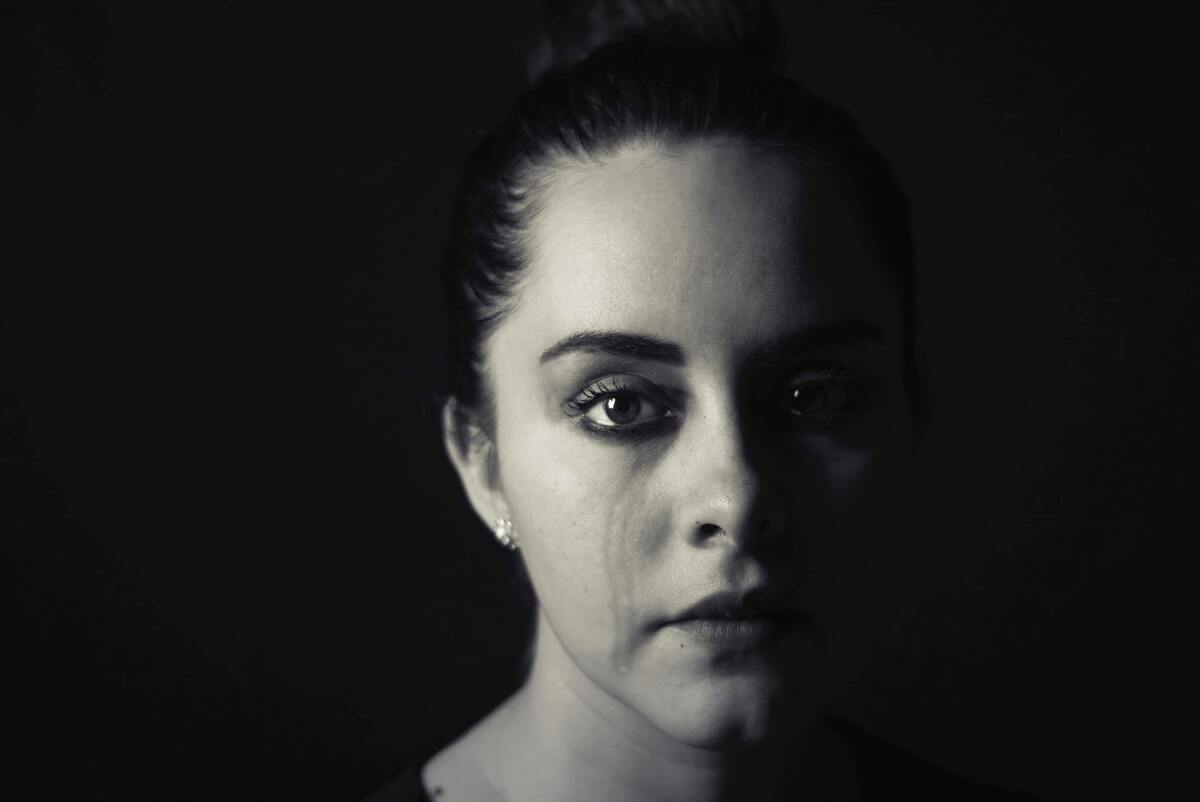Table of contents
General considerations about eating disorders

Nowadays beauty standards have become increasingly demanding, causing young people and adults to go deep after the perfect body, which meets all the required standards. There are people who come to find defects or even develop paranoia before their body as to think it is very overweight, but in fact it is not.
This type of behavior can be a serious sign for the beginning of an eating disorder. The person dissatisfied with their body will try at all costs to achieve the ideal body through various ways, from forcing vomiting, using anabolic steroids, or constant fasting.
The eating disorders are much more constant between the age group of 15 to 27 years in Brazil, after all, the young people in this age group are the ones who have more insecurity and even discomfort with their body.
Eating disorder and its history

The eating disorder is a serious mental disorder very present nowadays, which aggregate several factors. In the topics below we will discuss more about this type of pathology, its origins and the most appropriate treatment for it.
What is an eating disorder
The eating disorder or eating disorder (ED) is a mental disorder in which its carrier has an eating behavior in which affects both their health physically and mentally.
These types of disorders are considered pathologies by ICD 10 (International Statistical Classification of Diseases and Health Problems), DSM IV (Diagnostic and Statistical Manual of Mental Disorders) and WHO (World Health Organization).
There are several types of eating disorders among them the binge eating disorder (BED) in which the individual ingests massive amounts of food in a short period of time and the anorexia nervosa in which the person eats very little and consequently ends up staying well below their ideal weight.
Generally, people with these eating disorders also have psychological disorders such as depression, anxiety, attention deficit hyperactivity disorder (ADHD), drug abuse, alcohol abuse, and are also related to obesity.
History
Eating disorders may seem like a "new" disease nowadays, but in fact it was already present many centuries ago. Anorexia, for example, already existed since the middle ages with the "anorexic saints".
Because their lives were totally dedicated to religion and God, they practiced self-imposed fasting as a way to resemble the crucified Christ, and this practice made them feel more "pure" and closer to our Lord.
An example of a possible diagnosis of anorexia nervosa in the past was Saint Catherine, born in the region of Tuscany in Italy in 1347. At only six years of age the young girl had a vision with Jesus alongside the apostles Peter, Paul and John and from that moment on her behavior and life were totally transformed.
At the age of seven she consecrated herself to the Virgin Mary and promised to remain a virgin and never eat meat, the latter being a very common behavior among anorexics nowadays.
At the age of 16 Catherine entered the Mantelatas, which was an order of widowed women who lived at home under very strict rules devoting themselves to prayer and helping those in need.
Catherine was always spending hours and hours praying in her room and only fed on bread and raw herbs, and when forced to feed properly the young woman resorted to vomiting.
As much as they tried to make her eat properly, she justified that the food itself made her sick and not the other way around. She made a great fast of two and a half months from Lent until the ascension of the Lord, not eating or even drinking liquids.
Even without eating she was always active and cheerful, which is one of the symptoms of anorexia nervosa, psychic and muscular hyperactivity. At 33 years of age Catherine was in extremely poor health, not accepting any food or drink, until she died on June 29, 1380 and was canonized by Pope Pius XII.
Is there a cure for an eating disorder?
There is appropriate treatment to deal with eating disorders, which consists of psychological and nutritional monitoring, to achieve a weight appropriate to your BMI. In addition to physical exercise on a regular basis and decrease in habits of giving food back or overeating.
The use of antidepressants and topiramate (an anticonvulsant that also acts as a mood stabilizer) may be necessary. In more severe and chronic cases, it is necessary to hospitalize the patient or even perform bariatric surgery.
It is a treatment that can be laborious and long lasting, but with much effort and dedication, there is how to overcome this eating pathology.
Signs that serve as warning signs of eating disorders

There are several signs that you need to watch out for when an eating disorder begins. Whether it's sudden weight loss, dietary restriction, or social isolation, you need to be concerned if you see a relative, friend, or even yourself demonstrating any of these symptoms.
Below we will talk in more detail about each of these signs and what to do when faced with each one.
Sudden weight loss
Weight loss in an unexpected way is one of the most common symptoms of those who suffer from eating disorders. The person may deny food or eating, and in some cases when they are eating they tend to leave a good part of the food on their plate out and not eat. This type of behavior is very common among people who suffer from anorexia or bulimia.
Self-imposed dietary restriction
The person who suffers from this type of disorder tends to restrict certain food groups or the amount of food they eat. They may refuse to eat certain types of food due to intolerance or taste and end up eating only one type of food, missing out on the nutrients of a balanced diet.
Social isolation
The patient with eating disorders can also present behavior related to social isolation. These people lose interest in meeting or talking with friends, or performing everyday actions such as sitting at the dinner table with the family or going to school.
The most common causes of eating disorders

Eating disorders can have their causes and origins by several existing factors, whether psychological, biological, personality or external influences from the place where the person lives. In the following topics we will talk more about each of these factors and how they can influence someone to have this type of disorder.
Genetic factors
Individuals who have family members who have already presented some eating disorder in life have the same predisposition to also present the same disease.
In other words, people who have a first-degree relative who has suffered from one of these disorders have a much higher chance of developing this disease than someone who has no relative with this history.
According to research, there are specific genes that influence hormones, such as leptin and ghrelin, and can directly influence a person's personality and behavior associated with diseases such as anorexia or bulimia.
Psychological factors
Psychological factors such as Post Traumatic Stress Disorder (PTSD), Attention Deficit Disorder (ADHD), depression and panic disorders are associated as possible causes for eating disorders. Certain behaviors such as impulsivity, procrastination, impatience and sadness are associated with low satiety signals or lack of hunger.
In addition, personal problems or traumas can also be triggers for the development of any of these disorders. Whether it's a layoff at work, the death of a loved one, a divorce, or even learning problems like dyslexia.
Biological factors
The hypothalamic-pituitary-adrenal (HPA) axis, which is a set of responsive interactions involving the hypothalamus, pituitary, and adrenal gland that is responsible for controlling stress, digestion, and the immune system, may be strongly linked to eating disorders.
Since it is responsible for releasing appetite and mood regulators such as our beloved serotonin and dopamine, if something abnormal occurs during this distribution, there is a great chance that an eating disorder will occur in the person.
After all serotonin is the controller of our anxiety and appetite, while dopamine plays an important role in the reinforcement and reward system. People with eating disorders end up feeling little or practically no pleasure when eating and among other stimuli and activities.
Personality
Personality can be a major factor in the development of an eating disorder, such as low self-esteem, perfectionism, impulsivity, hyperactivity, and self-acceptance problems. In addition, there are some personality disorders that also carry risks and influence the development of these disorders:
Avoidant personality disorder: These are people who are very perfectionist, who avoid social contact with others, in romantic relationships tend to be very shy for fear of embarrassment or victimization and worry excessively about criticism and the opinion of others.
Obsessive-compulsive personality disorder: It consists of extreme perfectionist behavior to the point of trying to organize things to be done in a very specific way to achieve perfection. Carriers tend to want to do things by themselves with fear and distrust of others, besides having compulsive behavior, and restricted in emotions.
Borderline personality disorder: Also known as borderline personality disorder, which involves both psychology and psychiatry, and is often difficult to diagnose. These are very impulsive people with self-destructive tendencies, who may have outbursts of hatred and in more extreme cases may even commit suicide.
Because they are self-destructive they may even self-harm, causing cuts all over the body. They may also present rebellion and emotional neediness. Narcissistic personality disorder: It consists of people with a very inflated personality and ego, needing attention and excessive admiration from other people.
In intimate relationships they tend to be very toxic and troubled, mainly because of the person's lack of empathy and selfishness. However their self-esteem is very vulnerable and fragile, to the point that any criticism will drive this person crazy.
Cultural pressures
In Western culture the idea of thinness is considered the standard of female beauty. Many professions require an ideal weight for women, for example, professional models. In addition, people who are a little thinner or obese are targets of bullying and embarrassment.
There are people who judge their body as above the ideal weight and end up taking extremely dangerous measures to lose time, as in the case of anorexia in which the person provokes the vomit of everything that was fed for feeling weight in the conscience in gaining weight.
External influences
External influences coming from the patient's childhood can be a great factor for the development of this type of disease. The very behavior of parents or relatives can trigger these eating habits since childhood. The obsessive behavior by weight, diet and thinness.
The school environment influence itself can also cause the eating behavior of the person. The bullying practiced by children with fatter people and the great expectations of both parents and teachers in the performance of the child are also a great draw for the emergence of eating disorders.
Anorexia nervosa, symptoms and treatment

Anorexia nervosa, also known only as anorexia, is a silent disease that has sudden weight loss as its main characteristic. We will talk in more detail about this pathology and how to treat it in the following topics.
Anorexia nervosa
Anorexia nervosa is an eating disorder in which the patient has a great fear of getting fat and gaining weight, having the extreme desire to be thin or to stay thin. These people restrict their eating, many times refusing to eat or when they do eat, they have that feeling of guilt, forcing them to vomit out everything they have eaten.
Symptoms of anorexia nervosa
The most common symptoms for this disease are sudden weight loss, to the point of reaching even below the ideal weight, excessive practice of physical activities.
In women who are already in puberty there is the absence of three or more menstruations since anorexia can bring serious complications to the female reproductive system, decrease or absence of libido and for men there can be erectile dysfunction and retarded growth with malformation in bones such as the legs and arms.
Other symptoms may also occur, such as tooth decalcification and cavities due to constant vomiting, depression and suicidal tendencies, constipation and bulimia later on.
Treatment of anorexia nervosa
Treatment should be done with both depression and anxiety medications such as fluoxetine and topiramate to address obsessive and compulsive thoughts, as well as olanzapine which is a medication for bipolar disorder but used to stabilize the patient's mood.
Psychological treatment is also performed through family psychotherapy and cognitive behavioral therapy. A diet is also performed in order to get the patient back to his ideal weight. Sometimes a nasogastric tube is used to inject food from the nostrils to the stomach.
Bulimia nervosa, symptoms and treatment

Bulimia as well as anorexia has similar symptoms to anorexia, however both are quite distinct diseases. We will talk more about this pathology, its symptoms and proper treatment below.
Bulimia nervosa
This disorder consists of immediate weight loss and fatigue with several other factors such as the practice of unhealthy diets, excessive use of caffeine and drugs. They usually use methods to lose weight such as using diuretics, stimulants, not taking any liquids and doing physical exercises in an exaggerated manner.
Bulimia can also be related to other disorders such as depression, anxiety, drug addiction, alcoholism, self-mutilation and in very serious cases suicide.
These people tend to go several days without eating to try to lose more weight, however they then fall into such a gluttony and gorge themselves on large amounts of food, leading to guilt and a guilty conscience.
As the body ends up staying a long time without absorbing any food, causing a greater absorption of fat as soon as the person feeds again. This ends up causing a vicious circle of guilt and compulsion to lose weight.
Symptoms of bulimia nervosa
The most common symptoms are sudden weight loss, depressed and inconstant mood, dental problems and very dry skin due to constant vomiting, irregular menstruation, cardiac arrhythmia, and dehydration.
Treatment of bulimia nervosa
The treatment of bulimia nervosa is performed through cognitive-behavioral therapy, the use of antidepressants, selective serotonin reuptake inhibitors, and nutritional monitoring.
Orthorexia nervosa, symptoms and treatment

Orthorexia is a term created by American physician Steve Bratman, which serves to indicate people with excessively healthy eating habits. Although this term is recognized by doctors as an eating disorder, it is not used as a diagnosis in DSM-IV.
Next we will talk more about this disease that may sound unfamiliar to most people.
Orthorexia nervosa
The patient who has otorexia has an obsession to follow a healthy diet, excluding several other foods that they consider "impure" or bad for health such as dyes, trans fat, foods that have too much salt or sugar.
These people have such an exaggerated way of seeing the healthy diet to the letter that they avoid it at any cost and even fast from those foods that they judge to be harmful.
Symptoms of orthorexia nervosa
People with orthorexia tend to have serious problems with dietary deficiencies, especially in some specific nutrients, as well as anemia and vitamin deficiencies.
People may tend to isolate themselves, as it is very difficult to find a companion who shares the same habits as her. In addition, she may want to avoid commitments or activities that involve food, such as a family lunch or parties and get-togethers.
Treatment of orthorexia nervosa
Because it is a disorder that is not fully recognized, there is no certain treatment. However it is advised to follow a psychotherapeutic and also nutritional treatment. Hoping that the patient changes his way of thinking and let this paranoia hit him in a brutal way.
Allotriophagia, symptoms and treatment

Allotriophagia, also called pica or allotriogeusia, is a rare disease that consists of humans developing an appetite for substances and objects not considered edible. Below we will detail more about this disease, its symptoms and proper treatment.
Allotriophagy
The allotriophagy disorder consists of the individual eating non-food or inappropriate substances for human consumption. These may be chalk, stones, dirt, paper, charcoal, etc. The person will also ingest raw food ingredients such as flour, or tubers and starches. There are patients who even ingest animal feces, fingernails or blood and vomit.
This disease is much more common in children when they are being introduced to food, but it can also appear in adults and can indicate some other problem such as iron or zinc deficiency if the person is eating dirt, or mental problems.
Symptoms of allotriophagia
The most obvious symptoms are the urge to ingest inedible substances. This behavior must persist for one month to be diagnosed as allotriophagia. People with allotriophagia may also have symptoms of food poisoning such as vomiting, diarrhea, or stomach pain.
Treatment of allotriophagia
First of all it is necessary to find out where this abnormal condition is coming from, whether it is necessary to use food supplements or a change in eating habits if it is the case of lack of certain nutrients and vitamins.
Now if this manifestation is due to mental diseases, the patient needs psychological accompaniment and to be induced not to feed with these types of organisms anymore.
TCAP, symptoms and treatment

BED or binge eating disorder, unlike bulimia, the individual ingests large amounts of food in a short period of time (up to two hours), but does not have compensatory behavior to lose weight. In the following topics we will talk more about this pathology and its best treatment.
Binge eating disorder (BED)
BED consists of the individual ingesting large amounts of food in a very short time, causing them to lose control of how much or what they are eating.
To be diagnosed with this disease the patient must perform this behavior at least two days a week in six months, having the loss of control, the weight gain itself and also not be present compensatory behaviors to lose weight, such as vomiting and use of laxatives and fasting.
Symptoms of BED
The most common symptoms for BED are weight gain itself, to the point where some patients need to undergo bariatric surgery, depression accompanied by distress, and feelings of guilt and low self-esteem.
People with BED tend to also have some other psychiatric disorder like bipolar disorder or anxiety disorder. Binge eating can serve as a kind of escape valve for people who have any of these psychiatric or mood disorders, because they can't contain their emotions.
Treatment of BED
Treatment of BED requires the use of antidepressants such as selective serotonin reuptake inhibitors (SSRIs), both those used for other diseases such as depression and anxiety, and other SSRIs such as fluoxetine and citalopram to reduce weight and binge eating.
Cognitive-behavioral therapy is also used to not only reduce compulsive behavior, but also improve self-esteem, decrease depression and improve the patient's quality of life.
Vigorexia, symptoms and treatment

Vigorexia, also called bigorexia or muscle dysmorphic disorder, is a disorder that is linked to dissatisfaction with your own body, mainly affecting men. It can be somewhat comparable to anorexia.
Check below all information about this dysfunction, its symptoms and the proper treatment for it.
Vigorexia
Initially vigorexia was classified as an obsessive compulsive disorder by the physician Harrison Grahan Pope Jr., psychology professor at Harvard who had named this disease as Adonis Syndrome, due to the myth of Adonis in Greek mythology, who was a young man of immense beauty.
However due to the similarities with anorexia, vigorexia can also be treated as an eating disorder.
People with vigorexia are extremely neurotic about their bodies, to the point of performing heavy physical exercises and using anabolic steroids. The constant use of anabolic steroids can lead to an addiction similar to drug use.
Symptoms of Vigorexia
The symptoms of vigorexia consist in the patient performing an exaggerated practice of physical exercises that consequently end up causing a lot of fatigue, muscle pain, high heart rate even in normal situations and a higher incidence of injuries.
With the above normal increase in testosterone due to the use of synthetic substances, these patients also present with greater irritability and aggressiveness, depression, insomnia, weight and appetite loss, and lower sexual performance.
There are more serious cases of renal and hepatic insufficiency, vascular problems, an increase in blood glucose that can lead to diabetes and an increase in cholesterol.
Vigorexia Treatment
Cognitive-behavioral therapy is needed to improve self-esteem and identify the reason for such a distorted view of one's own body. The use of anabolic steroids should be discontinued immediately and a nutritionist should follow up with a balanced diet.
Even after the patient shows great improvement to the treatment, relapses can occur, so it is always good to have a psychologist follow up from time to time.
How can I help a person suffering from an eating disorder of some kind?

First try to talk to the person when you notice the first symptoms of any of these eating disorders. Try to convince them that they need to see a doctor as soon as possible.
Be calm and patient, do not show aggression or try to force the person to run for help. Try to explain what is happening and that their life may be hanging by a thread, but in a very subtle and succinct way. Preferably do this conversation in a private place, away from other means of communication such as mobile phones, etc.
Remember that the person who has an eating disorder has a very distorted view of the subject, so be prepared for negative reactions, after all patients with this nuisance feel ashamed to admit that they are suffering from this type of disorder.
If there is acceptance as to the disorder and the need for treatment, offer help and also the company to go after a psychologist. Always be close to the patient, either by motivating him to continue treatment and to get better and better, or to keep an eye out for possible relapses.

